Feeling wound up? Try these easy, therapist-approved yoga poses to relax your body and slow your breath. Choose from 10 poses, short routines (5, 10–15, or 20+ minutes), and quick breathing add-ons—no gear needed.
Reading time: ~8 minutes
Quick takeaway: Hold each pose for 1–3 minutes (or 5–10 slow breaths), breathe through the nose, and make the exhale a little longer than the inhale.
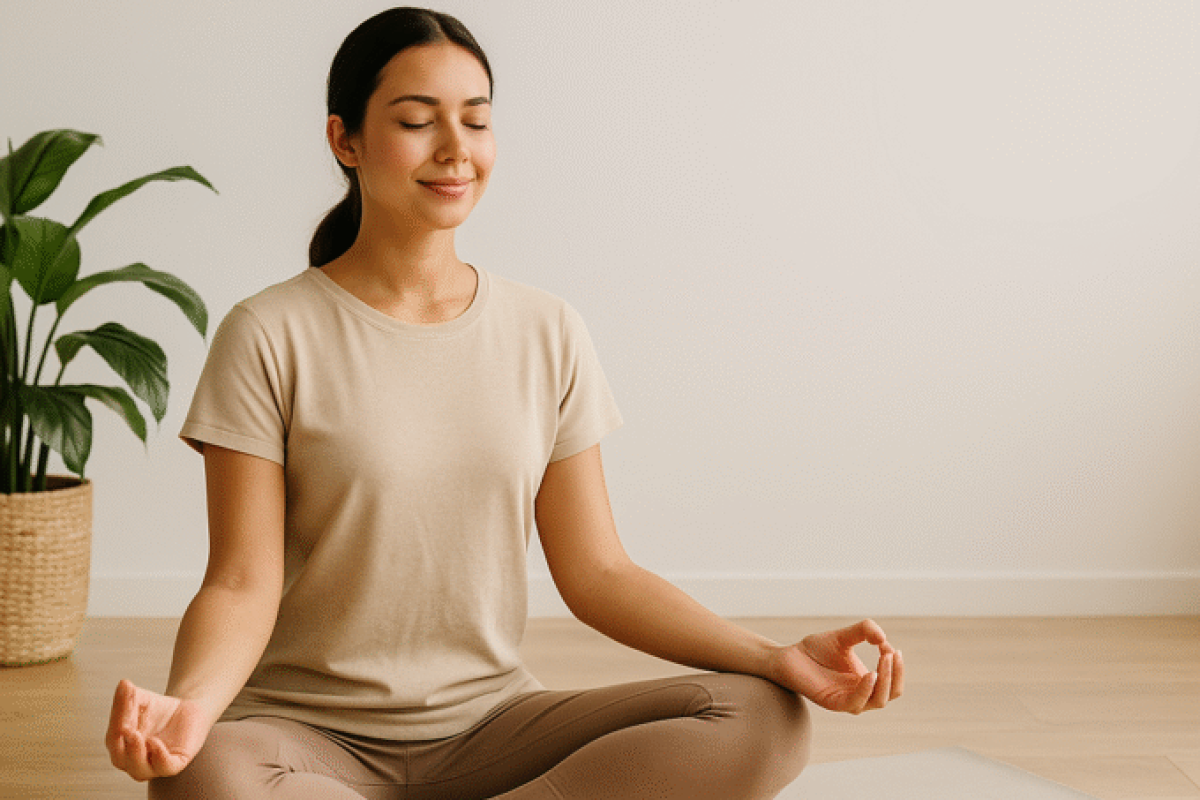
How to Use This Guide
Pick 3–5 poses and flow slowly between them.
If thoughts race, silently count your breaths (in for 4, out for 6).
Use cushions/blankets freely—comfort is the goal, not depth.
The 10 Best Stress-Relief Poses
1) Child’s Pose (Balasana)
Why it helps: Signals safety, eases back/shoulder tension, calms the nervous system.
How: Knees wide, big toes touch, hips to heels. Forehead on mat/cushion, arms forward or by your sides.
Hold: 1–3 minutes.
Props: Pillow under chest or between hips/heels.
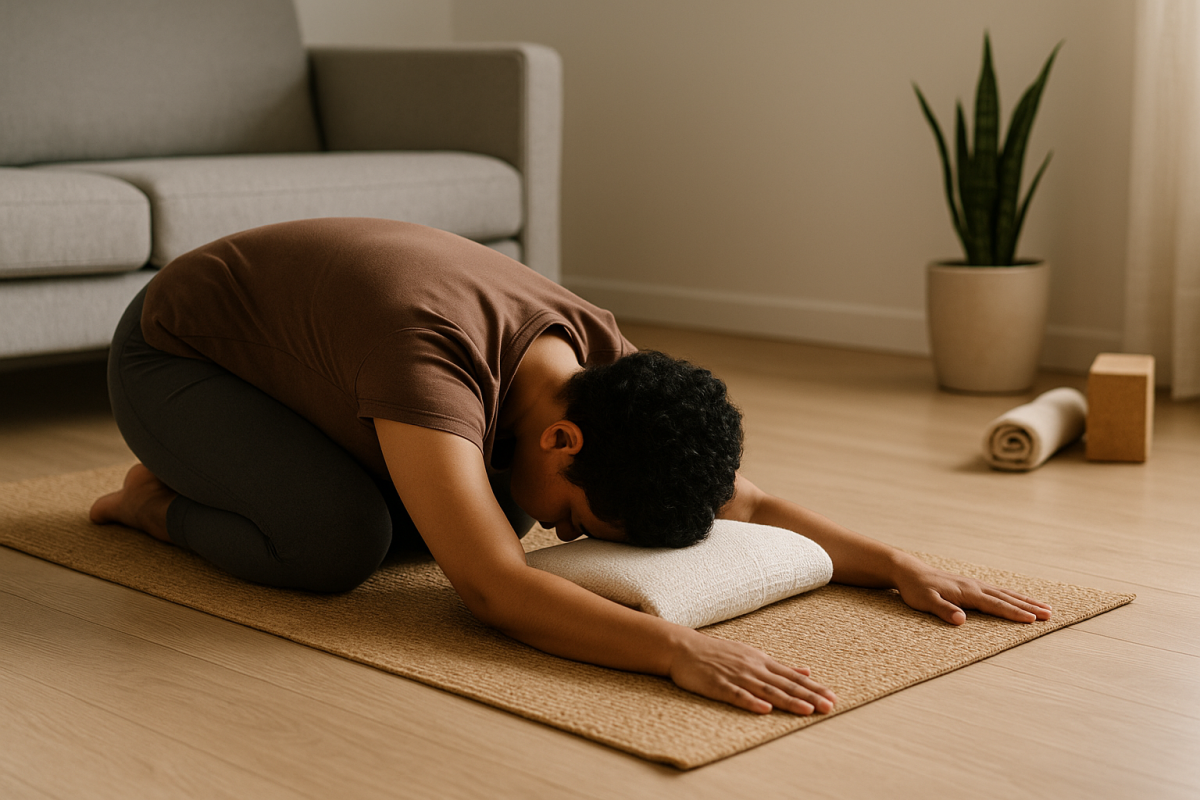
2) Legs Up the Wall (Viparita Karani)
Why: Down-regulates; eases heavy legs; great pre-sleep.
How: Sit close to a wall, swing legs up, scoot hips toward the wall, arms relaxed.
Hold: 3–5 minutes.
Props: Folded blanket under hips if hamstrings are tight.
Note: If you have uncontrolled high blood pressure or glaucoma, keep holds short and gentle.
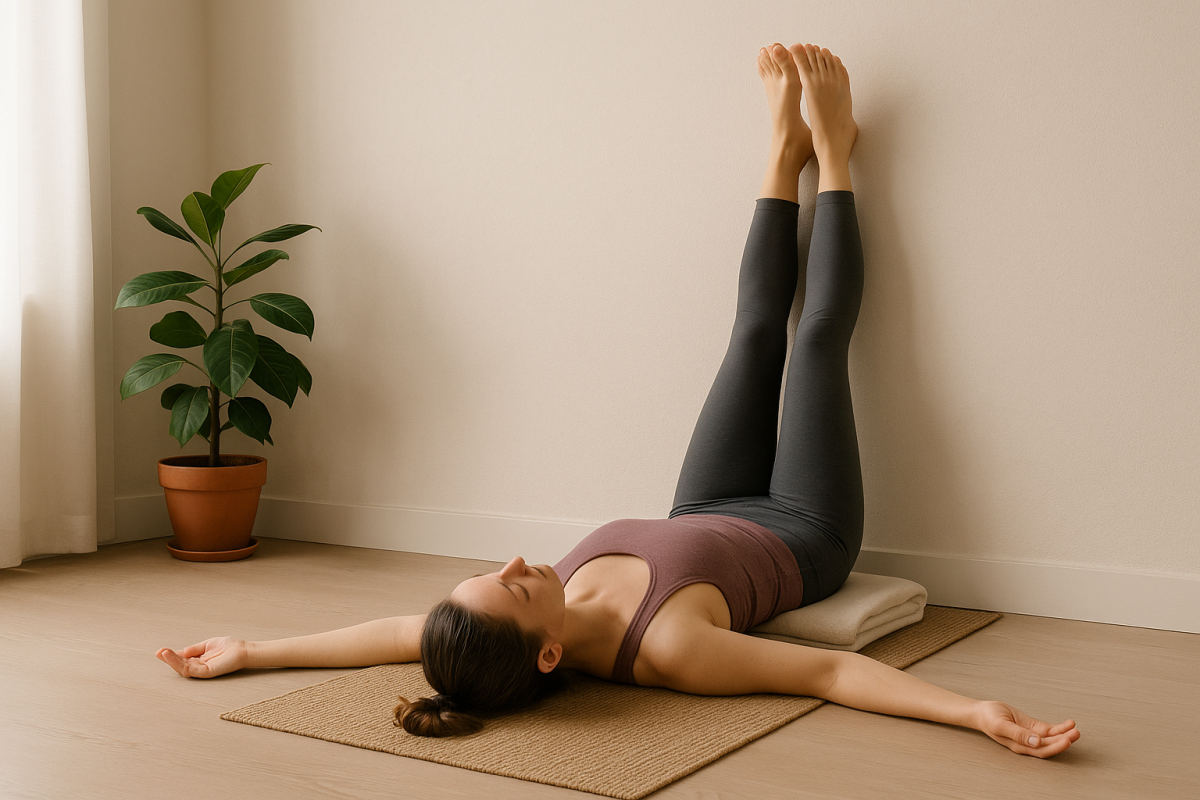
3) Supported Bound Angle (Supta Baddha Konasana)
Why: Opens chest/hips; deeply restorative.
How: Lie back (bolster or pillow along spine), soles of feet together, knees wide.
Hold: 2–4 minutes.
Props: Pillows under thighs to fully relax.
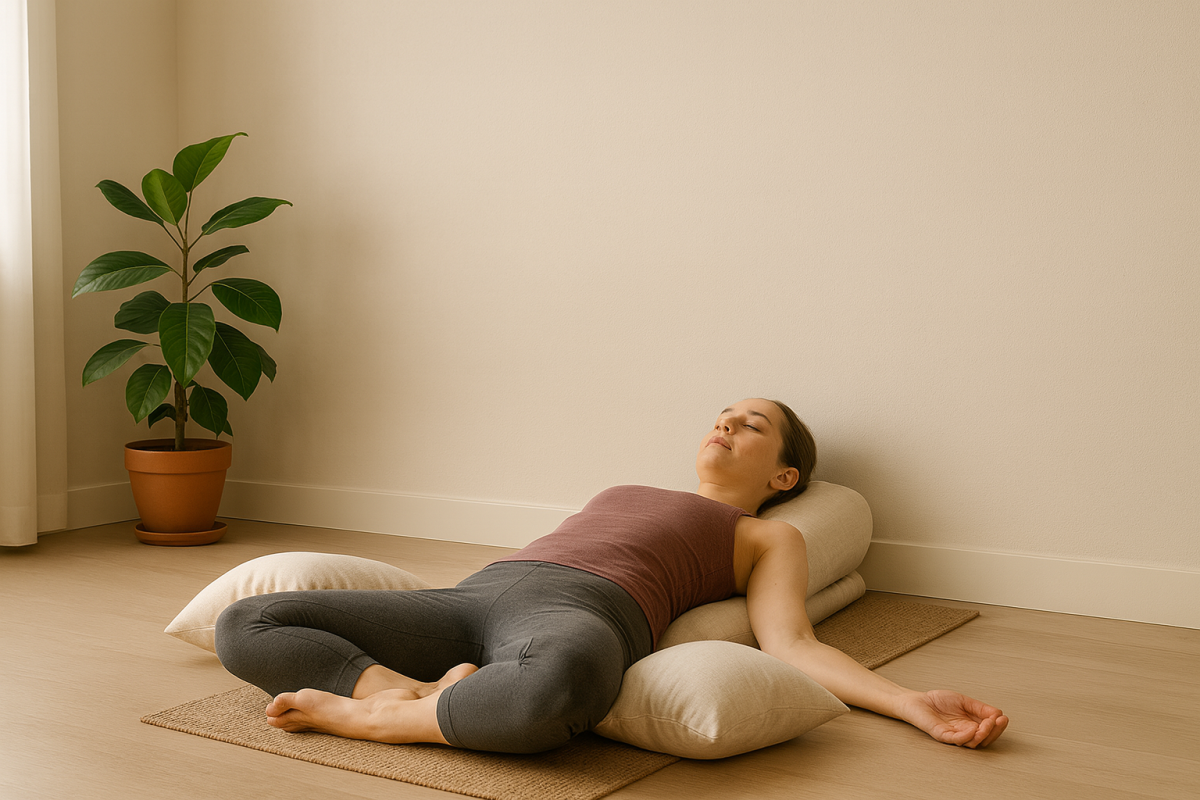
4) Reclined Twist (Supine Twist)
Why: Melts back tension; relaxes the belly and breath.
How: Hug knees in, drop to one side, arms in a T, gaze opposite. Switch sides.
Hold: 1–2 minutes each side.
Props: Pillow between or under knees.
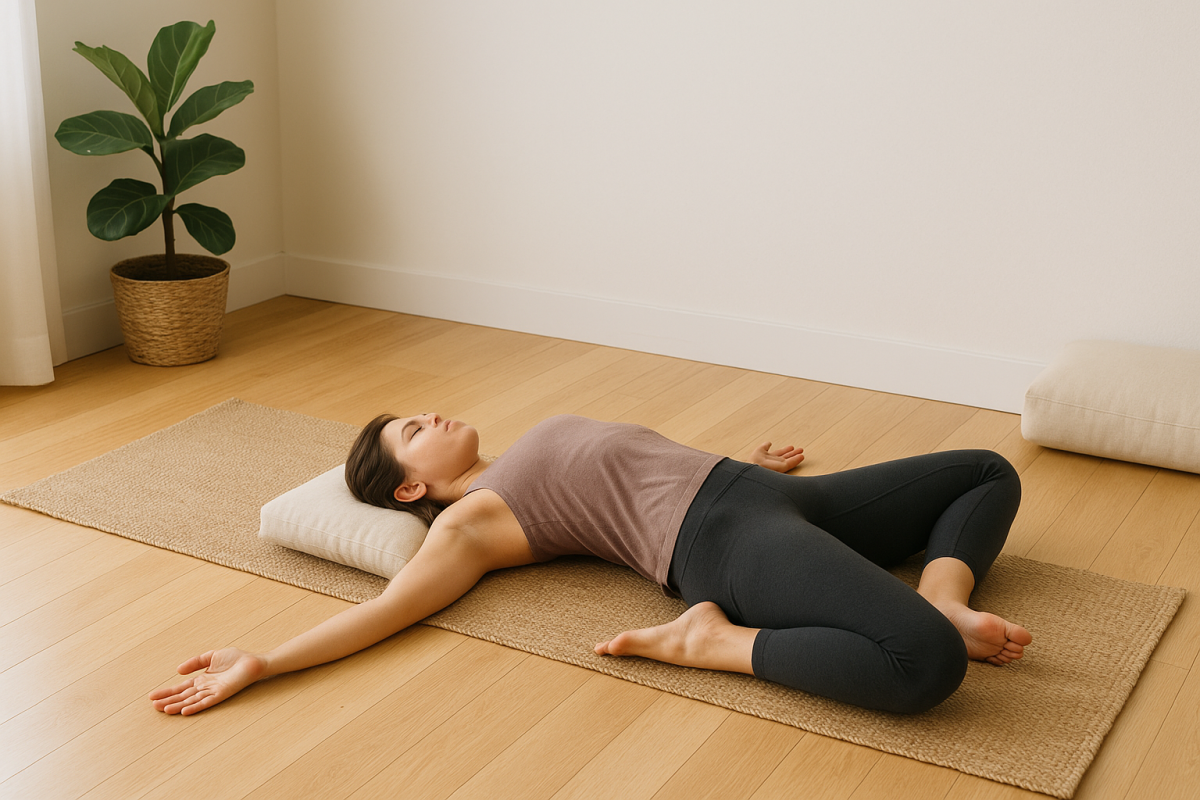
5) Cat–Cow (Marjaryasana–Bitilasana)
Why: Pairs movement with breath; shifts out of stress mode.
How: Tabletop; inhale arch (Cow), exhale round (Cat).
Reps: 6–10 slow rounds.
Props: Folded towel under wrists/knees.
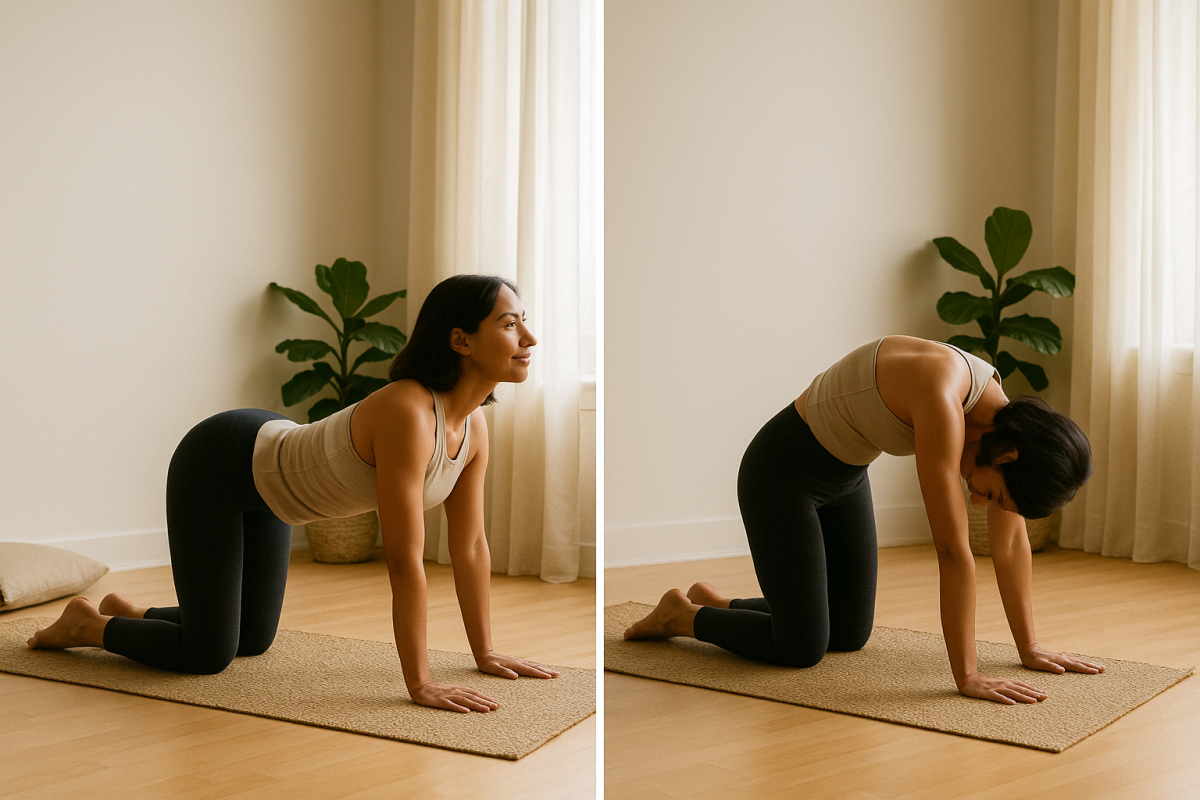
6) Puppy Pose (Anahatasana)
Why: Opens chest/shoulders without a deep backbend; soothing heart-opener.
How: From tabletop, walk hands forward, hips over knees, forehead or chin down.
Hold: 1–2 minutes.
Props: Cushion under chest or forehead.
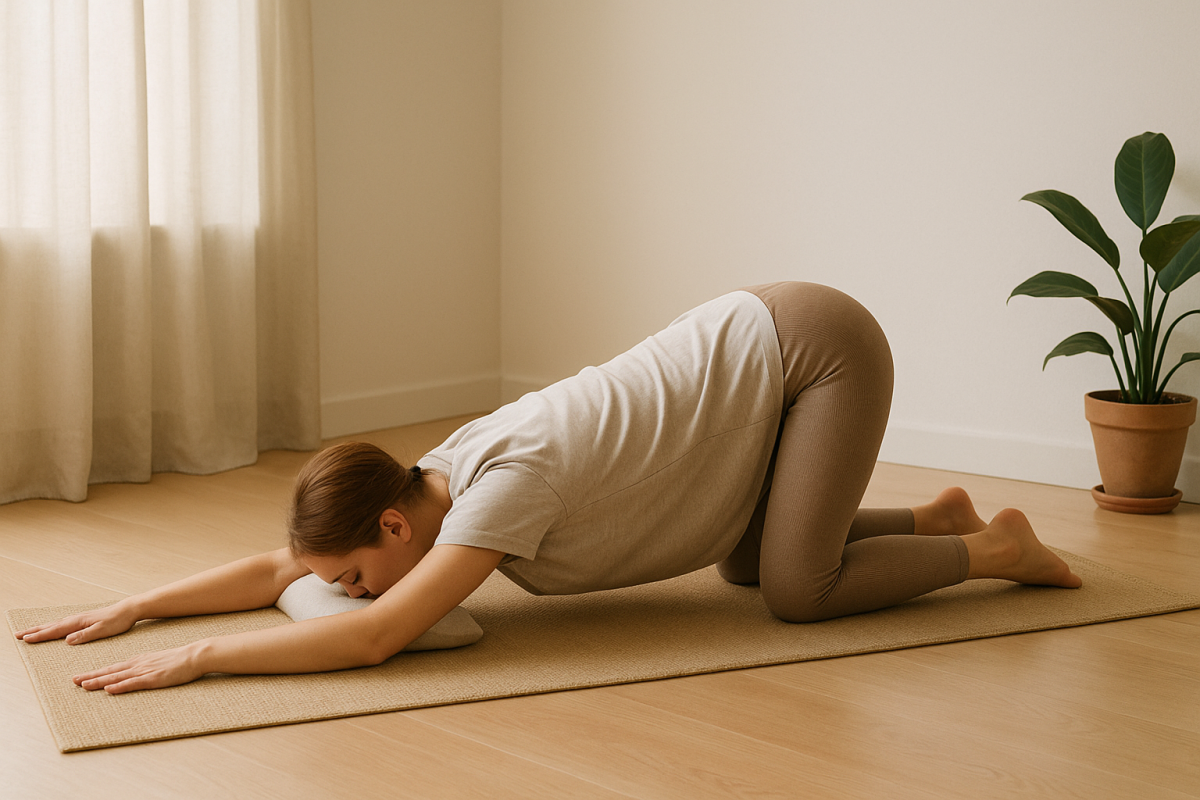
7) Standing Forward Fold (Uttanasana)
Why: Quieting; eases neck/upper-back; great midday reset.
How: Hinge at hips, knees soft, belly to thighs, head heavy.
Hold: 30–90 seconds.
Props: Hands on blocks/chair seat.
Note: If dizzy with head below heart, shorten hold or use Half Lift with hands on a table.
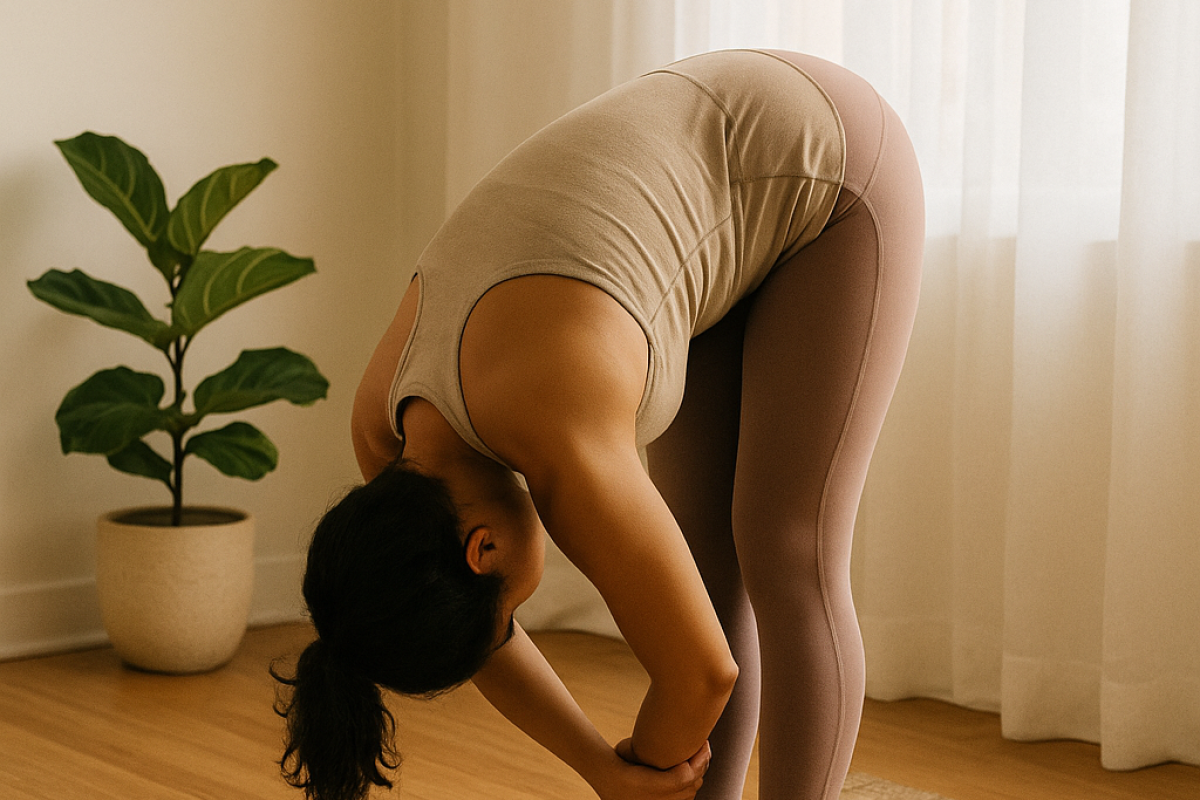
8) Seated Forward Fold (Paschimottanasana)
Why: Calms the nervous system; lengthens the whole back line.
How: Sit tall, bend knees as needed, hinge forward, relax neck/jaw.
Hold: 1–3 minutes.
Props: Strap or towel around feet; pillow on thighs to fold onto.
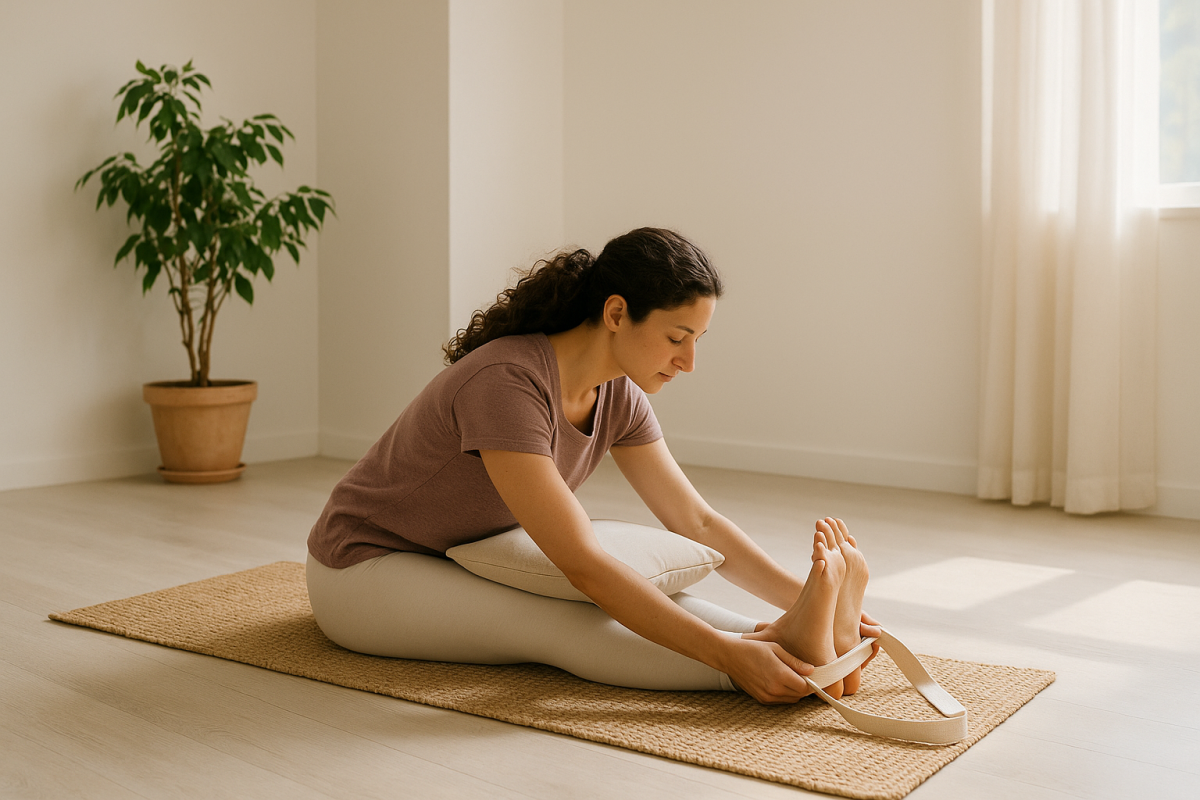
9) Supported Bridge (Setu Bandha)
Why: Gentle front-body opening; encourages slower breathing.
How: Lie down, feet hip-width, lift hips and slide a yoga block/firm book under the sacrum. Rest.
Hold: 1–3 minutes.
Props: Pillow instead of a block for softer support.
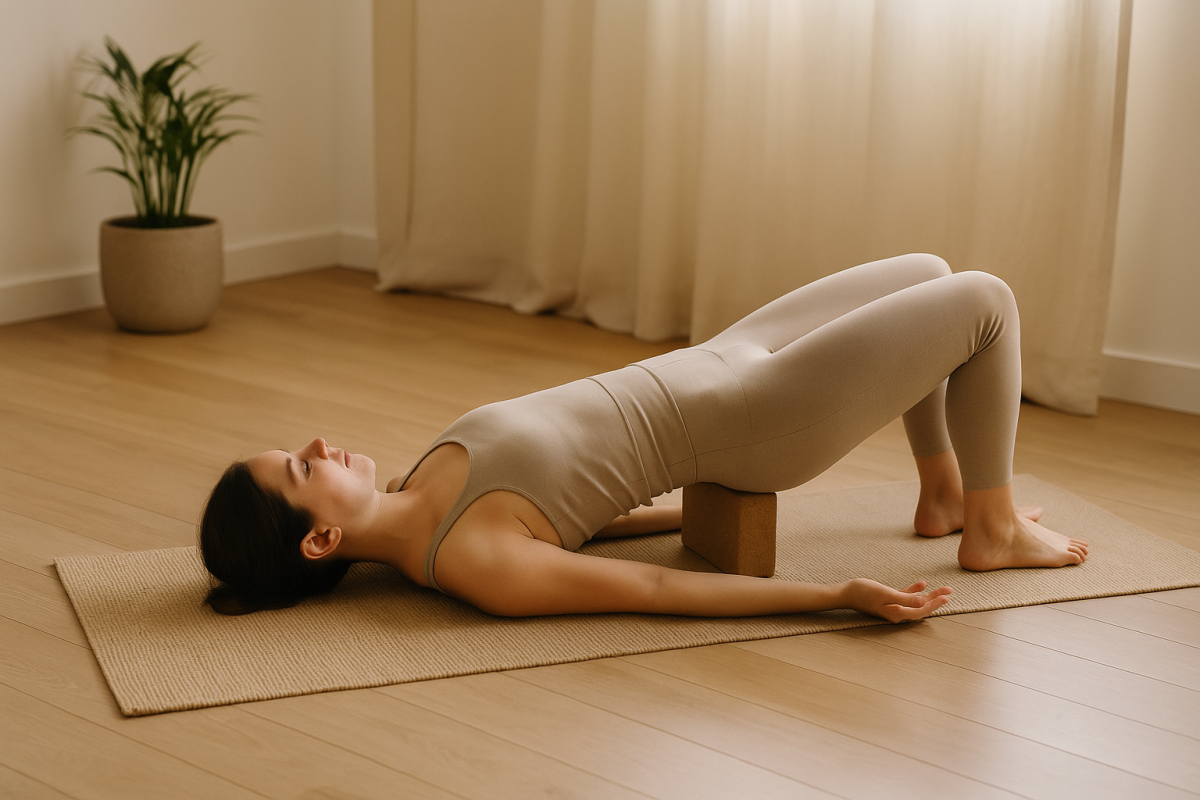
10) Sphinx Pose
Why: Counteracts slouching; opens chest with minimal effort.
How: Lie prone, elbows under shoulders, forearms down, broaden collarbones.
Hold: 1–2 minutes.
Props: Folded towel under elbows.
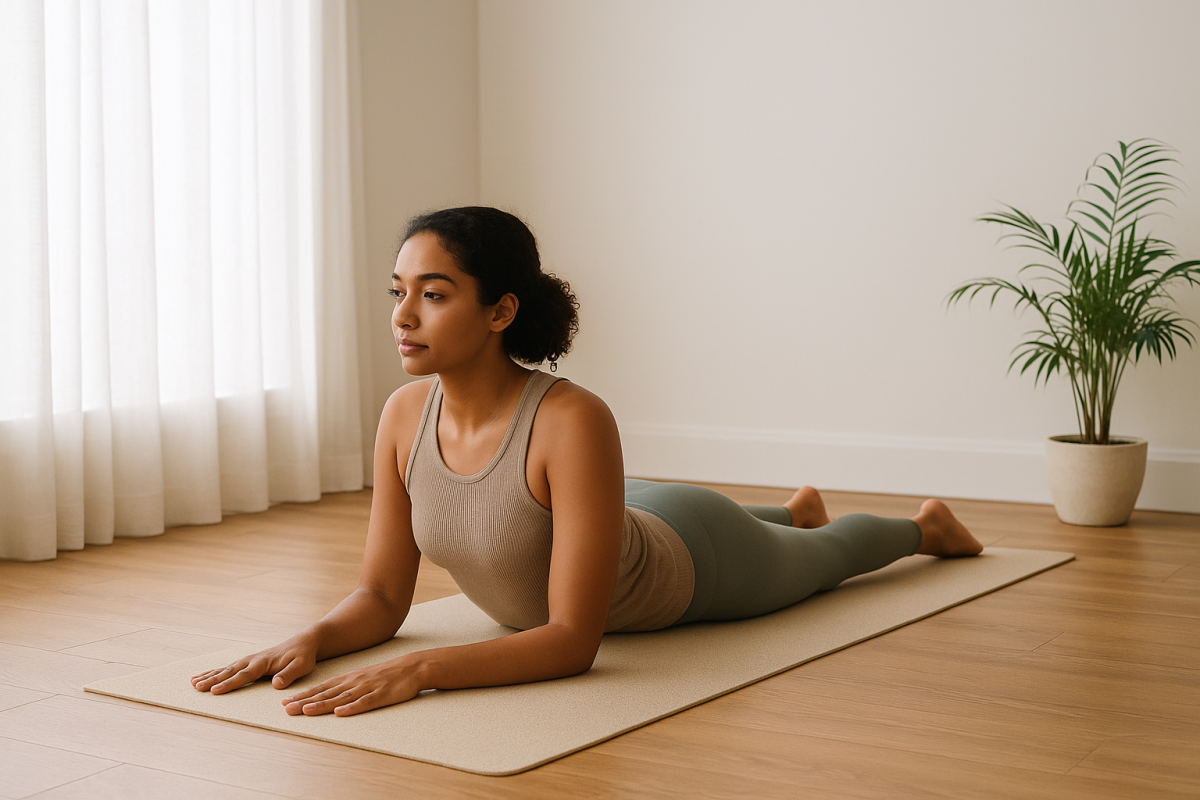
3 Ready-Made Calming Routines
A) 5-Minute Reset
Child’s Pose — 1:30
Cat–Cow — 1:30
Reclined Twist — 1:00/side
B) 10–15 Minute Wind-Down
Legs Up the Wall — 3–5:00
Supported Bound Angle — 3:00
Reclined Twist — 2:00 total both sides
Seated Forward Fold — 2:00
C) 20–25 Minute Deep Calm
Puppy Pose — 2:00
Sphinx — 2:00 → Child’s Pose — 2:00
Supported Bridge — 3–5:00
Reclined Twist — 2:00/side
Legs Up the Wall — 5:00
Close with 1 minute of quiet breathing (exhale longer than inhale)
Breathing Add-Ons
Box Breathing: In 4 • hold 4 • out 4 • hold 4 (4–6 rounds)
Coherent Breathing: ~5–6 seconds in, 5–6 out for 2–5 minutes
Kapalabhati (advanced/optional): 30 short exhales × 2 rounds (skip if pregnant, recent surgery, or with uncontrolled blood pressure)
Safety & Props
Pain ≠ gain. If anything feels sharp or nervy, ease off or stop.
Use cushions/blankets liberally; the goal is comfort.
Keep the room a little warm and the lights soft.
Medical note: If you live with eye conditions (e.g., glaucoma), uncontrolled hypertension, or are pregnant, shorten inversions (e.g., Legs Up the Wall) and favor side-lying rest.
FAQs
1) How often should I do yoga for stress relief?
3–5 short sessions per week (5–20 minutes) work well. Consistency beats intensity.
2) When’s the best time of day?
Anytime you can relax. Evenings support sleep; mid-afternoon breaks reduce tension; a gentle morning flow sets a calm tone.
3) I’m a beginner—where should I start?
Pick the 5-Minute Reset routine. Focus on smooth, nose-only breathing and longer exhales.
4) What if my mind won’t slow down?
Count breaths (inhale 1, exhale 1… up to 10 and repeat) or try Box Breathing while holding a supportive pose.
5) Do I need a yoga mat or blocks?
No. A towel or rug works. Pillows/books replace bolsters and blocks.